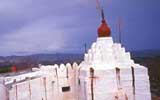Memories of the Chairman
Posted 20 October 2006

|
|
Memories of the Chairman
|
As we shuffle in line with a couple thousand people waiting to see Chairman Mao in a specially built, temperature controlled mausoleum, I have time to consider the rainbow of colors that represent security in Beijing: private contract guards in grey, police in blue, People's Republic of China army in green, and Communist party workers in dark black suits with imitation Italian loafers, many with wraparound shades.
Many of the suits are equipped with bullhorns and instead of exhorting us to sing songs of the revolution, they tell us to stay inside the yellow line and not to shove. The also tell us that we can buy yellow mums to place at the foot of the statue of Mao at the entrance of the mausoleum.

|
|
The hustlers at work in their art room.
|
There are a few people who snake their way through the crowd - maybe they are in a hurry to see the Chairman or maybe they just want to get it over with so they can eat; the Chinese love to eat and seem to always be chomping on something. I think this has something to do with the food shortages during the Great Leap Forward in the 1950s and the Cultural Revolution in the 60s.
As we finally enter the hall, we notice thousands of flowers have been placed at the feet of a 15 foot high, marble Chairman Mao. The look on his face is serene with a wisp of a smile. His legs are folded and hands lay gently in his lap. We shuffle forward as one of the black suit admonishes us to keep moving. We look at the Chairman's wax-like face and his body in special chamber. Is he real or is it fake? I recall a chapter in the book, "The Private Life of Chairman Mao", written by his private physician, Dr. Li Zhisui, now living in Chicago. The book is an extraordinary account his life starting with his death and the race to keep his body from decomposing. They have done an admirable job - even if it might be wax.

|
|
A view of part of the Forbidden City.
|
As we leave the solemn viewing passage, we enter a room where the cult of personality is for sale: Mao pendants, pins, watches, photos and more. The Chinese cannot yank out their money fast enough. I willingly enter the buying frenzy and cop some small Mao pins that I may use as presents to the Maoist rebels in Nepal in the event should we get stopped by them during our Annnupurna trek next month.
We retrieve our camera and personal items -- banned items in Mao's mausoleum - then head off for the Forbidden City, a walled fortress defended and conquered many times. We pay our admission of 60 yuan (8 yuan to the US dollar), I comment to Maria that it is unlike India where entrance fees for non-Indians was 10 times the amount the Indians had to pay. Funny how the world's largest democracy was so undemocratic when it came to fees for visiting historic sites and museum.

|
|
A view of part of the Forbidden City.
|
The immense size of the place is staggering we enter small courtyards accessed from a long walled hallway. These courtyards have passages that lead to more rooms, courtyards and passages. Well-heeled tourists from all over China swarm in and out of rooms. Old soldiers in woolen uniforms step slowly behind younger generations taking in the artifacts from the Ming (1368-1644) and Qing (1644-1911) dynasties.
We spend almost half a day in the Forbidden City, also known as the Palace Museum, and then make our way back home. It has been an interesting 24 hours in Beijing. From the 55 yuan (7 US dollars) pedicab ride down busy streets and narrow huotongs (alleys) where I knocked a mirror off a car (blame my pedicab driver and the guy who owned the car for not turning in his mirror), to the English students who hustled us to buy student artwork for 500 yuan (64 US dollars).

|
|
A Taichi instructor teaching the subtle points of a move as the group prepares for the Olympics in one of the large courtyards of the Forbidden City.
|
On the way back to our room, we see a restaurant crew shouting slogans as they get pumped up for another night of work, Chinese tourists peering up at tall buildings, parents picking up their kids from school on bicycles, and busy Beijing businessmen equipped with the de riguer Bluetooth headsets.
Tomorrow we will try to buy train tickets to Xi'an and Lhasa, find out how we can get to the Great Wall for less than 650 yuan, and go to the night market where we can get protein in the form of crickets, grasshopper and other insects.






